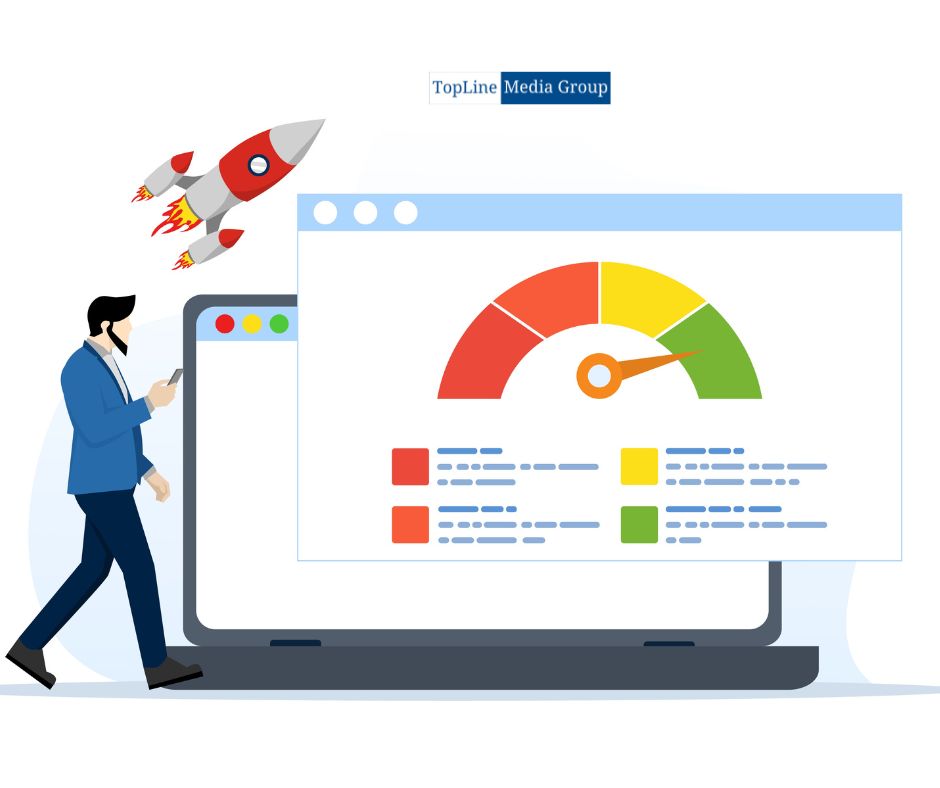In today’s fast-paced digital world, website speed plays a crucial role in determining the success of an online presence.
With users increasingly expecting instant access to information, slow-loading websites can lead to frustration, higher bounce rates, and, ultimately, loss of potential customers.
Therefore, website speed optimization has become a vital aspect of web development and digital marketing strategies.
Understanding the Importance of Website Speed
The speed at which a website loads has a significant impact on user experience, search engine rankings, and overall business performance.
Studies have consistently shown that users tend to abandon websites that take more than a few seconds to load.
In fact, according to Google research, 53% of mobile users will abandon a site if it takes longer than three seconds to load.
Furthermore, website speed is a critical factor in search engine optimization (SEO). Search engines like Google consider page speed as one of the ranking factors in their algorithms.
A faster website not only provides a better user experience but also improves its chances of ranking higher in search engine results pages (SERPs), driving more organic traffic and potential customers to the site.
Identifying Factors Affecting Website Speed
Several factors can influence the speed of a website, including:
Server Performance: The quality and location of the web hosting server can significantly impact website speed.
Choosing a reliable hosting provider with adequate resources and server optimization can improve loading times.
Image Optimization: Large, uncompressed images can significantly slow down a website.
Optimizing images by compressing them without compromising quality can reduce page load times and improve overall performance.
Code Efficiency: Bloated or poorly written code can increase the time it takes for a web page to load.
Cleaning up unnecessary code, minimizing CSS and JavaScript files, and leveraging techniques like minification and compression can streamline website performance.
Caching: Implementing browser caching and server-side caching can help reduce server load and speed up page rendering by storing frequently accessed data and resources locally on users’ devices or the server.
Content Delivery Network (CDN): Utilizing a CDN can distribute website content across multiple servers worldwide, reducing latency and speeding up the delivery of assets such as images, CSS files, and JavaScript libraries to users across different geographic locations.
Strategies for Website Speed Optimization

To improve website speed and enhance user experience, consider implementing the following optimization strategies:
Choose a Fast and Reliable Hosting Provider: Select a hosting provider that offers high-performance servers, SSD storage, and reliable uptime guarantees.
Consider using a content delivery network (CDN) to improve server response times further.
Optimize Images: Resize and compress images before uploading them to your website.
Use image compression tools and formats like JPEG or WebP to reduce file sizes without sacrificing visual quality.
Minimize HTTP Requests: Reduce the number of HTTP requests required to load a web page by combining and minifying CSS and JavaScript files and using CSS sprites to combine multiple images into a single file.
Enable Browser Caching: Leverage browser caching to instruct web browsers to store static resources locally, reducing the need to download them again on subsequent visits.
Set appropriate expiration dates for cached content to ensure freshness.
Implement Lazy Loading: Lazy loading delays the loading of non-essential resources such as images, videos, and iframes until they are needed, improving initial page load times and conserving bandwidth.
Enable Gzip Compression: Enable Gzip compression on your web server to reduce the size of HTML, CSS, and JavaScript files transferred over the network, resulting in faster page loading times.
Optimize Critical Rendering Path: Prioritize the loading of critical above-the-fold content to ensure that users can quickly access the most essential parts of a web page.
At the same time, additional resources continue to load in the background.
Monitor and Analyze Performance: Use tools like Google PageSpeed Insights, GTmetrix, and Pingdom to monitor website performance metrics, identify bottlenecks, and track improvements over time.
Regularly analyze website speed reports and take corrective actions as needed.
Mobile Optimization: With the increasing prevalence of mobile devices, optimizing websites for mobile performance is imperative.
Implement responsive design techniques, prioritize mobile-friendly content, and minimize the use of large media files to ensure fast loading times on smartphones and tablets.
Performance Budgeting: Establishing performance budgets can help maintain website speed and prevent performance regressions over time.
Set goals for key performance metrics such as page load time, time to interact, and first contentful paint, and prioritize optimizations that keep your website within these budgets.
User Experience Testing: Conduct user experience testing to gather feedback on website speed and performance from real users.
Use tools like heatmaps, session recordings, and user surveys to identify pain points and areas for improvement, then iterate on your optimization efforts accordingly.
Continuous Optimization: Website speed optimization is not a one-time task but an ongoing process.
To maintain a competitive edge, regularly audit and optimize your website’s performance, keeping up with best practices, technological advancements, and changes in user behavior.
Accessibility Considerations: While optimizing website speed, ensure that your optimizations do not compromise accessibility for users with disabilities.
Pay attention to factors such as keyboard navigation, screen reader compatibility, and color contrast to ensure that all users can access and navigate your website efficiently.
Conclusion
By prioritizing website speed optimization and incorporating these additional considerations into your strategy, you can create a fast, user-friendly website that delights visitors, enhances your brand reputation, and drives conversions.
Remember, in the digital age, speed and performance are not just competitive advantages—they’re essential components of success in the online marketplace.
Ready to optimize your website for speed and performance?
Contact us at Topline Media Group to discuss how we can improve your website’s user experience and drive better business results.
FAQs
Why is website speed optimization important?
Website speed optimization is crucial because it directly impacts user experience, search engine rankings, and overall business performance. Faster-loading websites lead to higher user satisfaction, lower bounce rates, better SEO rankings, and increased conversion rates.
What factors affect website speed?
Several factors can influence website speed, including server performance, image optimization, code efficiency, caching, content delivery network (CDN) usage, and more. Each plays a significant role in determining how quickly a website loads for users.
How can I identify what’s slowing down my website?
You can use various tools and techniques to identify performance bottlenecks on your website. Tools like Google PageSpeed Insights, GTmetrix, and Pingdom provide detailed reports on website performance metrics, highlighting areas that need improvement. Additionally, analyzing server logs and monitoring network activity can help pinpoint specific issues.
What are some strategies for website speed optimization?
There are several strategies you can implement to improve website speed, including choosing a fast and reliable hosting provider, optimizing images, minimizing HTTP requests, enabling browser caching, implementing lazy loading, enabling Gzip compression, optimizing the critical rendering path, and more. Each of these strategies targets different aspects of website performance to achieve faster loading times.
How can I optimize images without sacrificing quality?
You can optimize images by resizing them to the appropriate dimensions for web display and compressing them using tools like Adobe Photoshop, ImageOptim, or online services like TinyPNG. Additionally, choosing the correct image format (such as JPEG or WebP) and adjusting compression settings help reduce file sizes while preserving visual quality.
What is browser caching, and how does it improve website speed?
Browser caching involves storing static resources like images, CSS files, and JavaScript files locally on users’ devices. When a user revisits a website, their browser can retrieve these cached resources instead of downloading them again from the server, reducing page load times and server load.
How often should I monitor and optimize my website’s performance?
Website speed optimization is an ongoing process that requires regular monitoring and maintenance. It’s recommended to monitor website performance metrics regularly using tools like Google PageSpeed Insights and GTmetrix and to optimize your website whenever significant changes are made or performance issues are detected.
What are some accessibility considerations for website speed optimization?
While optimizing website speed, it’s essential to ensure that your optimizations do not compromise accessibility for users with disabilities. Pay attention to factors such as keyboard navigation, screen reader compatibility, and color contrast to ensure that all users can access and navigate your website efficiently.
Does website speed affect mobile devices differently than desktops?
Yes, website speed can have a more significant impact on mobile devices due to factors like network limitations and device processing power. Optimizing for mobile performance is crucial, as slower-loading websites can lead to higher bounce rates and decreased user engagement on smartphones and tablets.
How can I test my website’s speed on different devices and network connections?
You can use tools like WebPageTest, which allows you to simulate various device types and network conditions to test your website’s performance across different scenarios. Additionally, testing your website on actual devices and networks using tools like Chrome DevTools or mobile testing platforms can provide valuable insights into real-world performance.

